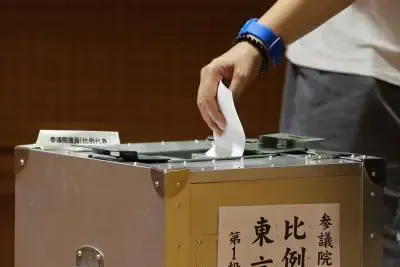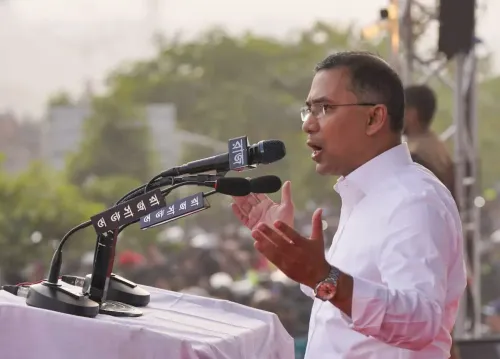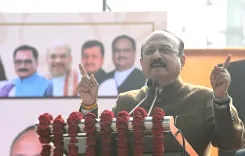Is Japan's Ruling Bloc Ready for the Upper House Election Challenge?

Synopsis
Key Takeaways
- The upper house election is pivotal for Japan's ruling coalition.
- 522 candidates are competing for 125 contested seats.
- The ruling bloc must secure 50 seats to maintain control.
- Public support for Prime Minister Ishiba is at a low.
- Failure to win a majority could complicate governance.
Tokyo, July 20 (NationPress) The voting process for Japan's upper house election commenced on Sunday morning, featuring a competitive race with 522 candidates vying for positions in an intense clash between the ruling and opposition factions.
The House of Councillors consists of 248 members serving six-year terms, with elections occurring every three years, where half of the seats are contested. Voters are deciding on 125 seats in today's election, including one seat that is contested due to a vacancy, as reported by Xinhua news agency.
At present, the ruling Liberal Democratic Party and its junior partner Komeito hold 75 seats that are not subject to re-election. The coalition, facing unfavorable media poll results, must secure 50 seats in this election to retain a majority in the 248-seat chamber.
This requirement is perceived as relatively manageable for the ruling bloc, which previously dominated the upper chamber, despite Prime Minister Shigeru Ishiba facing low public approval ratings amid significant challenges like soaring prices and substantial US tariffs. He has acknowledged that this is not an easy task.
In the October 2024 general election, the ruling coalition lost its majority in the more influential House of Representatives, leading to Ishiba's formation of Japan's first minority government in over three decades.
If the ruling coalition fails to maintain a majority in the upper house this time, it may become exceedingly challenging for Ishiba to manage his administration, as reported by local media.










